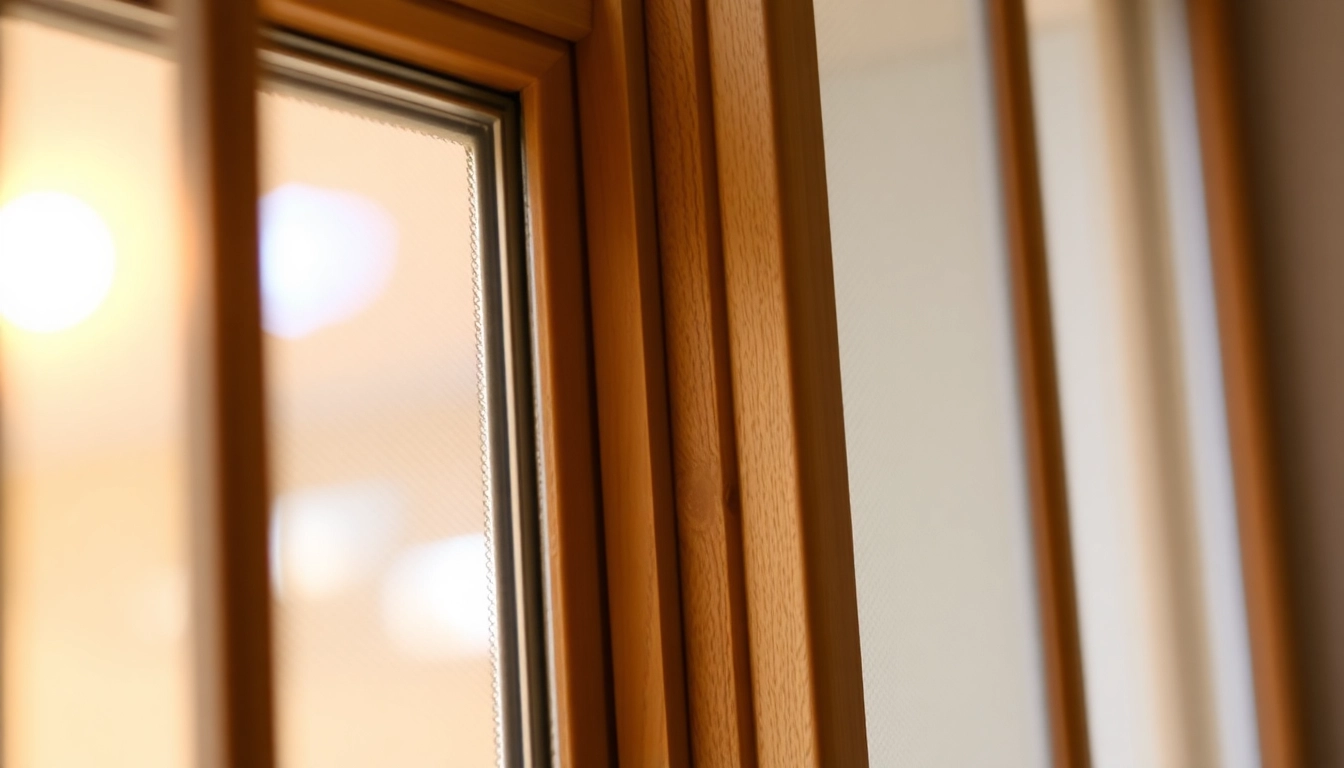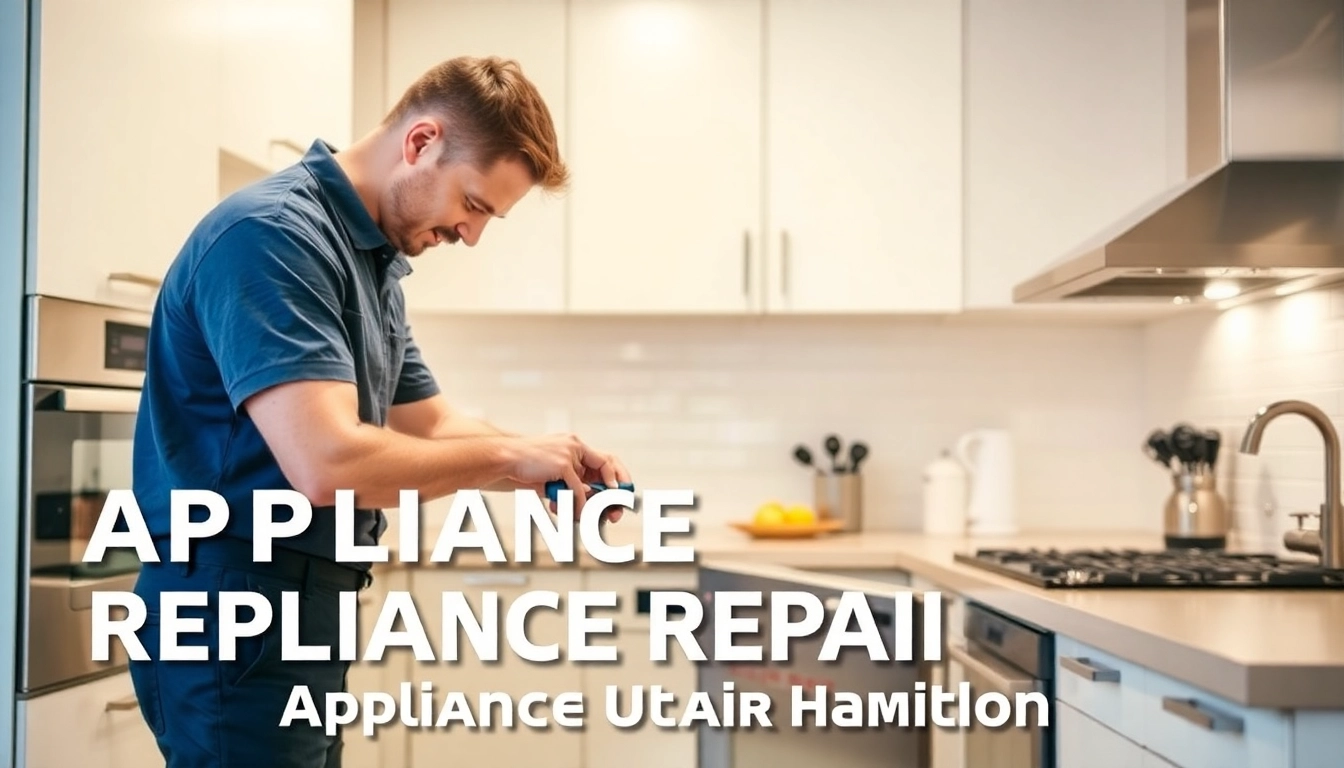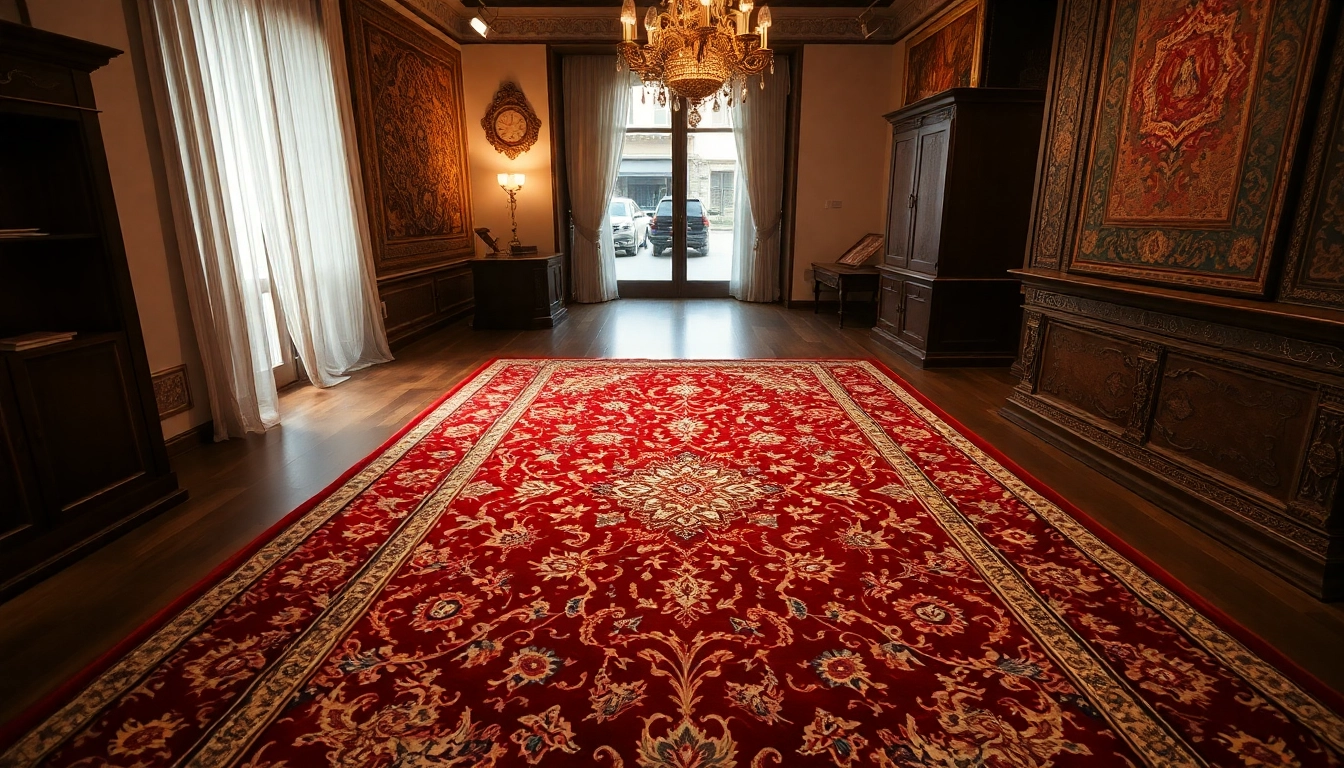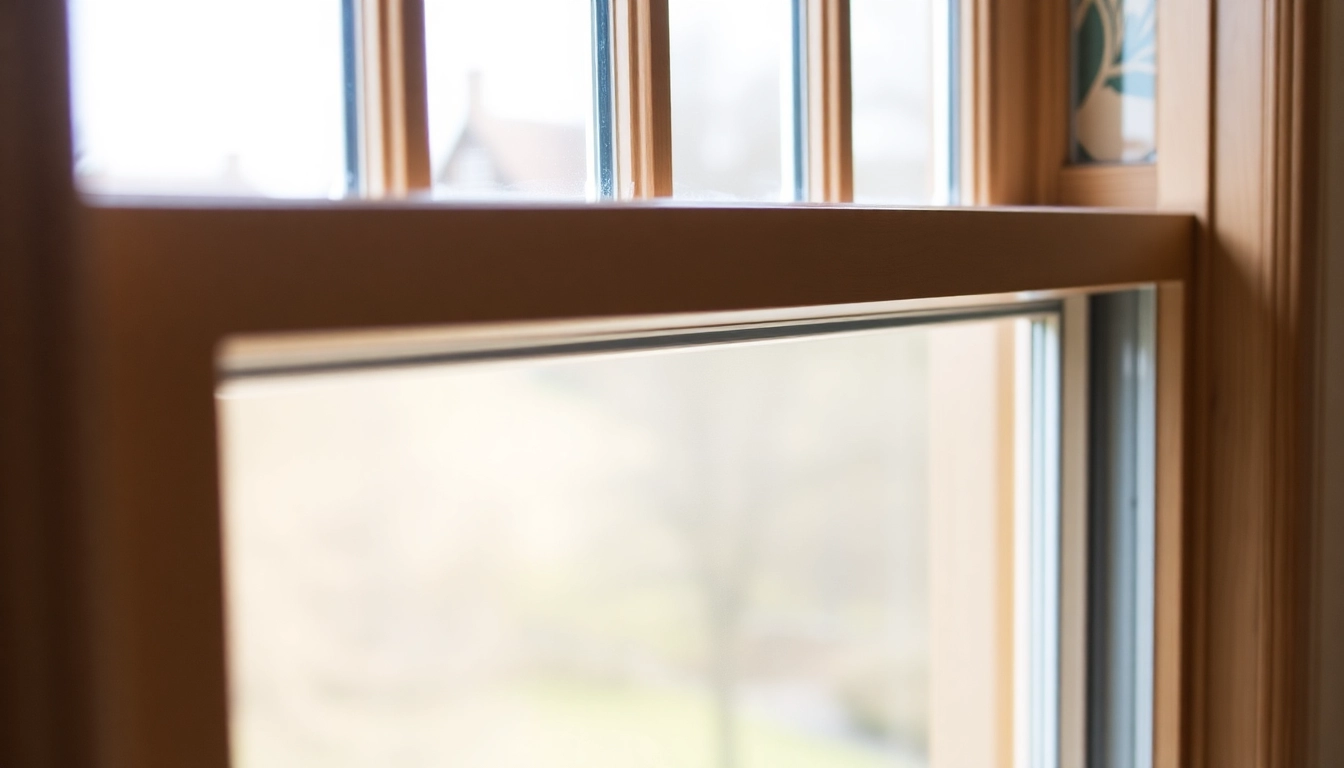Understanding Secondary Glazing for Sash Windows
What Is Secondary Glazing and How Does It Work?
Secondary glazing is an innovative and practical solution designed to enhance the performance of existing windows, particularly traditional sash windows. It involves installing an additional pane of glass or alternative transparent material on the interior side of the original window, creating a secondary barrier that significantly improves thermal insulation and acoustic separation. Unlike replacing the entire window, secondary glazing preserves the historical or architectural integrity of period properties while delivering modern-day benefits.
The installation typically involves attaching a slim, lightweight frame or track system to hold the secondary pane securely in place. When closed, this extra layer forms an almost airtight seal with the existing sash, trapping a pocket of air that acts as an insulator. This design not only reduces heat transfer but also muffles external noise, creating a quieter, more energy-efficient indoor environment. For homeowners keen on maintaining stylistic authenticity, specialized secondary glazing options are available that are discreet and unobtrusive.
To explore more about how secondary glazing can transform your sash windows, visit secondary glazing for sash windows—a versatile solution suited for heritage properties and modern homes alike.
Benefits Beyond Aesthetic Preservation
While secondary glazing is often celebrated for its ability to preserve the visual appeal of period sash windows, its advantages extend far beyond aesthetics. The implementation of secondary glazing can lead to concrete improvements in comfort, energy savings, and sustainability:
- Enhanced Thermal Efficiency: By adding an extra insulating layer, secondary glazing reduces heat loss through windows by up to 70%, depending on the materials used and installation quality. This results in decreased reliance on central heating systems, lowering energy bills.
- Noise Reduction: External noise pollution from traffic, aircraft, or urban environments can heavily impact well-being. Secondary glazing can reduce noise levels by approximately 30–50 decibels, creating a peaceful indoor atmosphere.
- Condensation Control: A secondary glazed unit minimizes temperature differences across the window pane, cutting down condensation buildup which can lead to mold growth or damage over time.
- Increased Security: Adding an extra layer of glass makes it more difficult for intruders to access the premises, thereby improving home security.
- Cost-effective Alternative to Replacing Windows: Retrofitting secondary glazing is generally more affordable than full window replacement, especially in listed or heritage buildings where traditional sash windows must be preserved.
Integrating secondary glazing into your property not only boosts comfort but also supports sustainability initiatives by reducing your carbon footprint—making it a wise investment for environmentally conscious homeowners.
Common Materials and Their Advantages
Selecting the right material for secondary glazing depends on specific application requirements, aesthetic preferences, and budget considerations. The most prevalent materials include glass, acrylic, and polycarbonate, each offering unique benefits:
Glass
Traditional and highly transparent, glass is the most common material for secondary glazing. It offers excellent clarity and can be treated for increased durability or UV resistance. Glass is ideal for properties where maintaining an authentic appearance is essential. Additionally, it can be combined with various coatings to improve energy efficiency.
Acrylic (Perspex)
Acrylic panels are a lightweight alternative to glass, often half the weight, making them easier to handle and install. They provide good optical clarity, have excellent impact resistance, and are less prone to shattering. Their affordability and ease of fabrication make acrylic a popular choice for DIY projects or temporary installations.
Polycarbonate
Polycarbonate is known for its exceptional toughness and high impact resistance, making it suitable for areas prone to vandalism or where safety is paramount. It also offers excellent thermal insulation properties and can be fabricated into various shapes and sizes. However, polycarbonate tends to scratch more easily than acrylic, so surface treatments are often recommended.
In terms of environmental impact, glass is fully recyclable, while acrylic and polycarbonate can be recycled with appropriate facilities. The choice of material should align with performance needs, aesthetic considerations, and sustainability goals.
Choosing the Right Secondary Glazing for Your Sash Windows
Material Options: Glass, Acrylic, Polycarbonate
The decision on which material to use hinges on factors such as durability, insulation properties, ease of installation, and visual appeal. For example, heritage conservation projects often favor high-quality glass with leaded or stained effects, whereas modern renovations might prefer acrylic or polycarbonate for convenience and safety.
Installation Methods: DIY vs. Professional Fitting
Installing secondary glazing can be straightforward for experienced DIY enthusiasts, especially with DIY kits that include everything needed for a proper fit. Many manufacturers, like Clearview Secondary Glazing, offer comprehensive guides and accessories for DIY fitting, making it accessible for homeowners to undertake the project and save on costs.
However, for bespoke or complex installations—such as historic buildings with stringent preservation requirements—professional services are recommended. Professional installers bring expertise in precise measurements, custom tailoring, and ensuring airtight seals that maximize performance.
Cost Considerations and Value for Investment
The cost of secondary glazing varies widely depending on the material, size, and installation method. Basic DIY kits can start from as little as a few hundred pounds for smaller windows, while bespoke, high-end solutions for larger or unique sash windows can cost over a thousand pounds. Evaluating the long-term energy savings, noise reduction, and enhanced comfort provides clarity on the true value delivered.
Remember, investing in quality secondary glazing is not just about immediate gains but also about preserving the character of your property and reducing ongoing heating and cooling costs. For tailored estimates, consult reliable providers or specialists who can recommend solutions fitting your budget and aesthetic goals.
Installation & Maintenance Tips for Optimal Performance
Step-by-Step Guidance for DIY Installation
Proper installation is crucial to achieve the maximum benefits of secondary glazing. Here are key steps to guide a DIY installation:
- Measure Accurately: Measure the height, width, and depth of your sash window recess with precision, accounting for any obstructions or irregularities.
- Select the Appropriate Kit: Choose a kit slightly larger than your measurements to ensure a tight fit without forcing the panels.
- Prepare the Frame: Assemble the track or frame according to manufacturer instructions, ensuring all components are secure.
- Install the Secondary Pane: Carefully insert the panel into the frame or track, checking for smooth operation and a snug seal.
- Seal the Edges: Use weatherstripping or sealant if necessary to eliminate drafts and improve thermal efficiency.
Ensuring a Perfect Fit and Seal
Achieving an exact fit minimizes air leaks and maximizes insulation. Use high-precision tools like laser measures for accuracy. Pay attention to gasket placement and ensure the secondary pane aligns perfectly with the existing sash. Regularly inspect seals for wear and replace them as needed to prevent drafts.
Maintenance Tips to Extend Longevity
Secondary glazing units require minimal upkeep but should be cleaned with non-abrasive cloths and mild cleaning solutions to preserve clarity. Check tracks and seals periodically, lubricate moving parts, and replace worn weatherstripping to maintain optimal performance. Proper maintenance can extend the lifespan of your secondary glazing by many years, safeguarding your investment.
Improving Home Comfort and Energy Efficiency
Noise Reduction: How Secondary Glazing Limits Sound Pollution
External noise pollution has become a significant concern, especially in urban environments. Secondary glazing acts as an effective sound barrier, reducing decibel levels and creating a more peaceful indoor space. Studies have shown reductions of up to 51dB when using high-quality secondary glazing, allowing homeowners to enjoy quieter evenings, increased privacy, and better concentration or relaxation.
Thermal Insulation and Cost Savings
By reducing heat transmission, secondary glazing lowers heating bills, often by 20–40%, depending on the properties’ existing insulation and the quality of the secondary units. The additional layer helps keep warmth inside during winter and blocks heat ingress during summer, contributing to a more stable indoor climate and reduced energy consumption.
Environmental Impact of Upgrading Sash Windows
Sustainable living benefits from upgrading existing windows rather than replacing them entirely. Secondary glazing reduces energy demand, curtails carbon emissions, and promotes resource conservation. For heritage buildings, it offers a maintenance-friendly option that aligns with conservation policies and environmental commitments.
Custom Solutions and Bringing Style Back to Heritage Windows
Bespoke Secondary Glazing Designs
Every property possesses unique features, and secondary glazing can be tailored to match specific stylistic and structural requirements. Custom-colored frames, stained glass effects, or traditional wood finishes allow seamless integration with period aesthetics. Skilled manufacturers provide bespoke options that respect architectural heritage while delivering modern performance.
Preserving Historical Features with Modern Tech
Heritage conservation often requires balancing preservation with functionality. Modern secondary glazing systems are designed to be discreet, often nearly invisible from the street, and removable if needed. Advanced materials and mounting solutions provide security and weatherproofing without damaging original fabric.
Case Studies: Sash Windows Upgraded Successfully
Consider a Victorian townhouse in central Bristol where secondary glazing was installed to preserve the sash windows’ charm. The project involved custom-made, slimline frames with double-glazed acrylic panels. Post-installation feedback highlighted substantial noise reduction, improved thermal comfort, and a complaint-free classic appearance. Such success stories demonstrate secondary glazing’s potential in various heritage settings.




